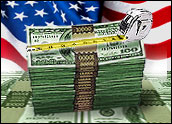
Today’s organizations increasingly experience the creep from the general tracking of customer contacts and responses by CRM to the general tracking of marketing activities and their returns by the CFO.
Marketers have to look at the bigger picture, at their contribution to the entire enterprise, rather than just at the campaigns and messages they contribute to the marketplace. In many cases, in order to play nice and make sense of their value to the organization, they have to define marketing’s creations in financial terms.
“Marketing is the creator of capital in an organization,” according to Tom McGuire, executive vice president and CFO of Revlon, New York. He has a rosier view to marketing than many financial types chiefly because he once worked on the marketing side. In his current position, he works closely with marketing to advance the goals of the cosmetics giant.
“Eighty percent of the value of a company is intellectual capital. It doesn’t show up on balance sheets,” he says. “Today, the new model of investment has money creating intellectual capital as well as traditional capital” — tangible return on the investment such as money that can be reinvested, new products that can be sold, new product concepts that can be executed, tested and distributed, etc. In financial terms, traditional capital is money, stock, bonds, property, machinery and equipment. However, it is primarily the intangibles, not hard assets, that dictate a company’s valuation by the stock market.
Management’s Challenge
With intellectual capital, the whole is bigger than its parts. Marketing’s intellectual capital at Revlon — market knowledge, recognizable and popular brands, expertise in executing messages and campaigns, vendor and distributor contracts, and customer relationships — was bigger than its business. The brand’s reputation loomed larger than the company’s revenues, but this happy predicament only showed that Revlon had room to grow its product line, distribution efficiency and sales.
Revlon had fallen short on category growth between 1999 and 2001, and a new management team committed to grow the business bigger than the brand. “Revlon had great brands, but they were not positioned right or communicated or supported appropriately,” McGuire says.
Soon after the executive team, including McGuire, understood its challenge, “we added US$30 million to the advertising budget,” he says. “It was not a waste of money because at the same time, in 2003, we had eight of the top 20 new products.”
“The CFO should increase marketing spend when marketing figures out what it does right,” says David Reibstein, the William Stewart Woodside professor of marketing at the Wharton School of the University of Pennsylvania. But at many companies, he says, the opposite happens: Finance thanks marketing for saving it money or boosting brand recognition on a limited budget, closes its coffers to additional funding and goes right on treating marketing as a cost center.
Revlon’s marketing team, however, had McGuire’s support and showed marketing’s value. It demonstrated that there was a market value for its intelligence and expertise.
Building the Balance Sheet
Reibstein points out that Amazon has done the same. “Amazon is constantly experimenting with marketing. They learn not just what programs work but how to present a Web page to you on the individual level, not just in aggregate as a customer,” he says. “That has gone a long way to make them smarter at what they do.”
Revlon, too, pushed itself ever farther in defining its marketing value and realizing its potential. “We had to improve execution and make our products easier to buy,” McGuire says. To do this, Revlon took all of its eyeliners out of the cubbyholes and put them on pegboard-hanging cards, for instance, making the product line easier to shop and harder to steal or damage.
“We also evaluated our sales team from top down as to customer relationships. We were able to gain more shelf space and improve customer relations,” he says.
Intellectual capital increases led to balance sheet restructuring to the tune of a $1.5 billion boost to the enterprise’s value, he reports. “We would not have been able to increase the value of the company without marketing and intellectual capital and the improvement of our own processes, like the execution of our marketing in stores.”
“All capital isn’t on the balance sheet, so simply delivering returns that cover the cost of capital is not enough,” McGuire says. Marketers aim to increase the value of the company by producing returns that meaningfully exceed to cost of tangible capital. To nurture its aim, marketing strategy must be supported by the overall organizational plan.
“Marketing planning should orchestrate all company assets, and marketing strategy should think through customer strategy and identify the gaps to it coming from all parts of the organization,” he says. “Marketing’s contribution to the business is to increase the value of the entire enterprise.”























































